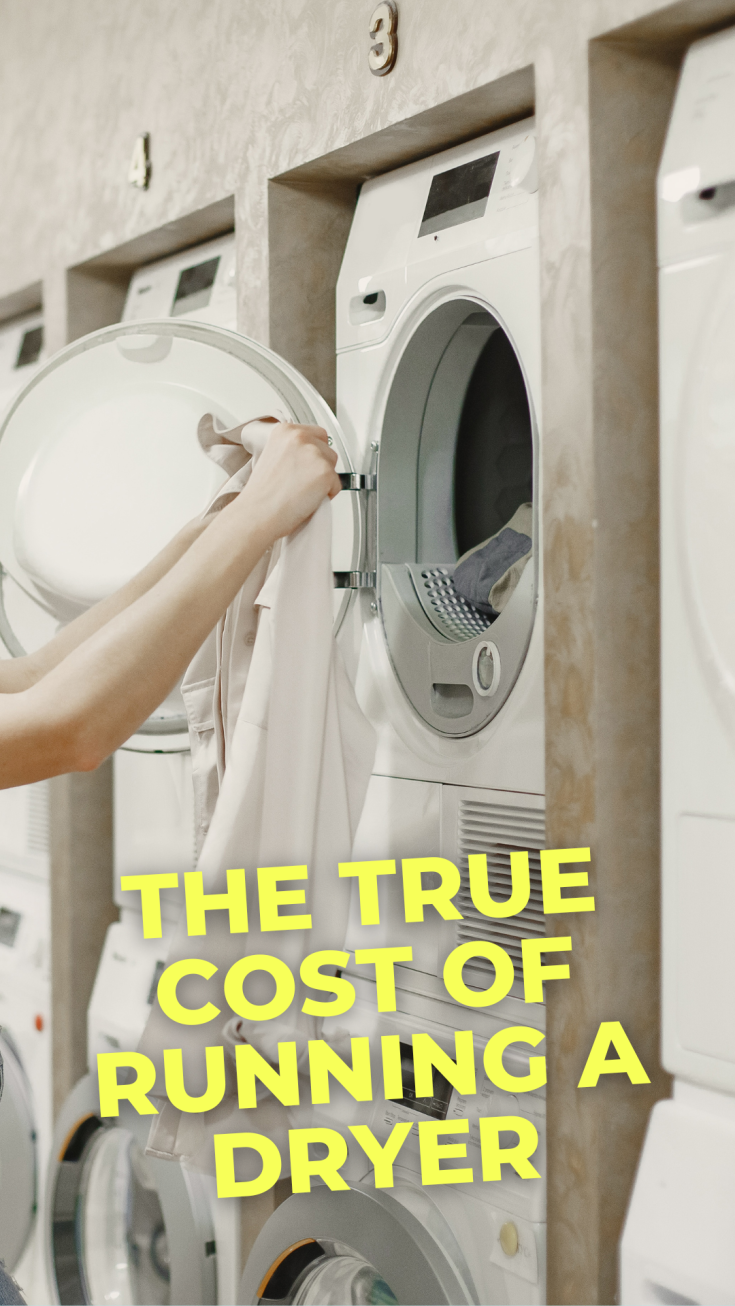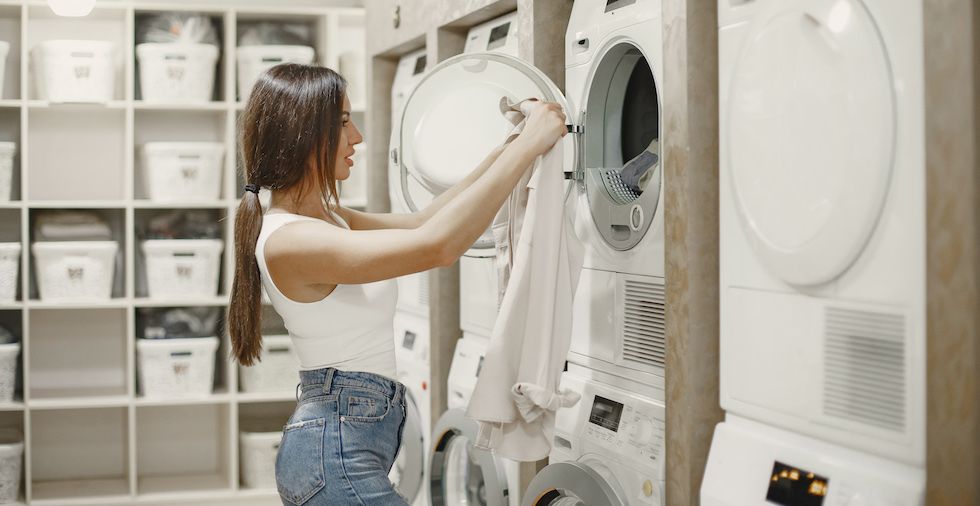- How much does it cost to run a tumble dryer?
- How to lower the cost of running a tumble dryer
- How much do other appliances cost?
Drying your clothes in the UK can be a nightmare. One minute, it's blue skies and sunny; the next, it's raining. Luckily, we have an appliance that can solve just that problem. But how much does a tumble dryer cost to run?
Looking at the potential energy consumption and operational costs here is wise. While drying your clothes in the machine is easy, it comes with a price tag. This guide examines the complexities of running a tumble dryer in the UK. You can expect a wealth of insights to help you understand the cost of running this machine.
How much does it cost to run a tumble dryer?
Various factors, such as energy consumption, the specific dryer model, and the prevailing electricity tariffs in the UK, influence the cost of tumble dryer operation. The current average cost of electricity stands at approximately 34p per kilowatt-hour (kWh).
But how many kilowatts (kW) does a tumble dryer need? There is a spectrum of options: the traditional vented dryer, the condenser dryer, and the innovative heat pump dryer. Each of these costs a different amount to run as they use varying kWs per hour.
The heat pump dryer stands out among these, celebrated for its energy efficiency which translates into significantly lower operational costs than its counterparts. To understand the energy consumption, consider the following average energy use per cycle:
- Vented dryer: Approximately 2.5 kWh per cycle
- Condenser dryer: Roughly 4.0 kWh per cycle
- Heat pump dryer: A mere 1.5 kWh per cycle
So, let's look at how much it costs to run a tumble dryer by doing a simple equation. That is multiplying the cost per hour by how long each tumble dryer takes:
- Vented dryer:5 kWh x 34p/kWh = £0.85 per cycle
- Condenser dryer:0 kWh x 34p/kWh = £1.36 per cycle
- Heat pump dryer:5 kWh x 34p/kWh = £0.52 per cycle
Remember that the above depends mainly on what tariff you are on, the model of the tumble dryer you have, and other factors.
How to lower the cost of running a tumble dryer
Worried about how much your tumble dryer is costing you? If you want to lower the cost of running a tumble dryer, we've got some energy-saving tips for you. Let's take a look at some of the clever tricks you can use to get started:
- Optimal load size: The cardinal rule of cost-efficient tumble dryer operation is to make the most of each cycle's capacity. Interestingly, an empty dryer incurs the same energy cost as a fully loaded one. However, exercising caution against overloading is paramount to avoid prolonging drying times and inadvertently incurring higher costs.
- Leverage the spin cycle: Before entrusting your garments to the tumble dryer's embrace, ensure your washing machine's spin cycle is set to a higher speed. This fundamental step effectively removes excess moisture from clothes, culminating in shorter drying durations.
- Routine maintenance regimen: Embrace the ritual of cleaning the lint filter after every cycle. For vented dryers, unimpeded airflow is non-negotiable. A clogged filter stifles efficiency, leading to elevated energy consumption.
- Invest in a heat pump dryer: Despite the potentially higher upfront cost, the long-term energy savings afforded by heat pump dryers render them an investment worth considering. These devices employ advanced heat exchange technology to re-use heat from the drying process, making them far more energy-efficient than traditional dryers.
- Intelligent fabric grouping: Stay with us on this one… Grouping fabrics with similar drying needs is a smart move. This calculated choice ensures similar drying times and, as a direct result, reduced energy consumption. Check the laundry symbols on the label to help with your groups.
- Smart scheduling: Run energy-intensive appliances like washing machines and tumble dryers during off-peak hours when electricity rates might be lower. Many energy providers offer time-of-use tariffs, encouraging users to shift their usage to non-peak hours.
- Maintenance matters: Regular maintenance is crucial for keeping appliances operating efficiently. Clean lint filters in tumble dryers, keep them updated and check for any problems here. Well-maintained appliances not only perform better but also consume less energy.
- Appliance upgrades: When replacing an old or inefficient appliance, opt for energy-efficient models with high Energy Efficiency Ratings (EERs) or Energy Labels. These labels provide valuable information about the appliance's energy consumption and help you make informed choices.
- Adaptive usage: Be mindful of how and when you use appliances. Avoid running half-full loads in washing machines and dishwashers. Use drying racks on sunny days to reduce tumble dryer usage. Minor adjustments in behaviour can lead to substantial energy savings over time.
How much do other appliances cost?
Appliances help streamline everyday tasks and enhance your quality of life in your household. Beyond the tumble dryer, a range of appliances contribute to your overall energy consumption. Let's delve deeper into this topic to understand how various household devices impact electricity bills. We will also examine changing your everyday habits to lower your consumption.
Washing machine:
The washing machine, a cornerstone of modern laundry routines, boasts varying energy efficiencies depending on the model and type. Front-loading machines are known for superior energy performance compared to their top-loading counterparts. Front-loaders use less water and require lower energy input due to their advanced design and technology. On average, a washing machine cycle costs around £0.26 in electricity. To further economise, consider using lower temperature settings when feasible, as heating water accounts for a significant portion of the energy consumed during a wash cycle.
Dehumidifier:
Though less conspicuous, dehumidifiers are crucial in maintaining indoor air quality and preventing mould growth. The cost of running a dehumidifier can vary based on the device's capacity and your specific needs. Generally, a medium-sized dehumidifier could cost around £0.21 per hour. To optimise dehumidifier usage, place it in areas with high humidity levels, such as basements or bathrooms, and ensure proper ventilation to enhance efficiency. You can also use a dehumidifier to dry clothes - it could be a cheaper option for you!
Tumble dryers, revered for their resilience in the face of the erratic British weather, can significantly impact energy budgets. However, that doesn't mean that you should avoid using them altogether. You can save money by embracing energy-efficient practices, making informed decisions about dryer types, and adopting a thoughtful approach to appliance use. Even minor adjustments can lead to reduced energy costs and a more environmentally-conscious lifestyle.
Q&A
Are you looking for some more answers? You've come to the right place. The following section will look at some frequently asked questions regarding tumble dryers and energy efficiency. Here's what you need to know.
How much does it cost to run a dryer in the UK?
How much it costs to run your tumble dryer will depend on various factors. These include your appliance type, how much you fill up your tumble dryer, what model you use, and your energy tariff. Since the cost of energy in the UK is continually changing, it isn't easy to give a static amount. However, in this guide, we have examined examples of how much a particular type of tumble dryer costs to run.
What is the cheapest way to use a dryer?
If you want to use a tumble dryer — but you also want to save money — it is worth lowering the heat on the appliance. Often, you can do this using the settings of your machine. You should look into the manual if you need extra information. When you lower the heat of your tumble dryer, you will find that it uses less energy overall. That should mean that the cost of running the appliance per hour goes down significantly.
Is 30 minutes enough for the dryer?
Most of the time, a tumble dryer cycle will take no longer than 30 to 45 minutes. You should check the manual of your model to see what it suggests. For the best results, ensure you fill your tumble dryer as much as possible. That way, you will get more for your money when drying your clothes. You may also want to look into alternative ways to dry your clothes, such as using an air dryer or clothing rack.
Is this cost what you were expecting? Let us know in the comments below!


Leave a Reply